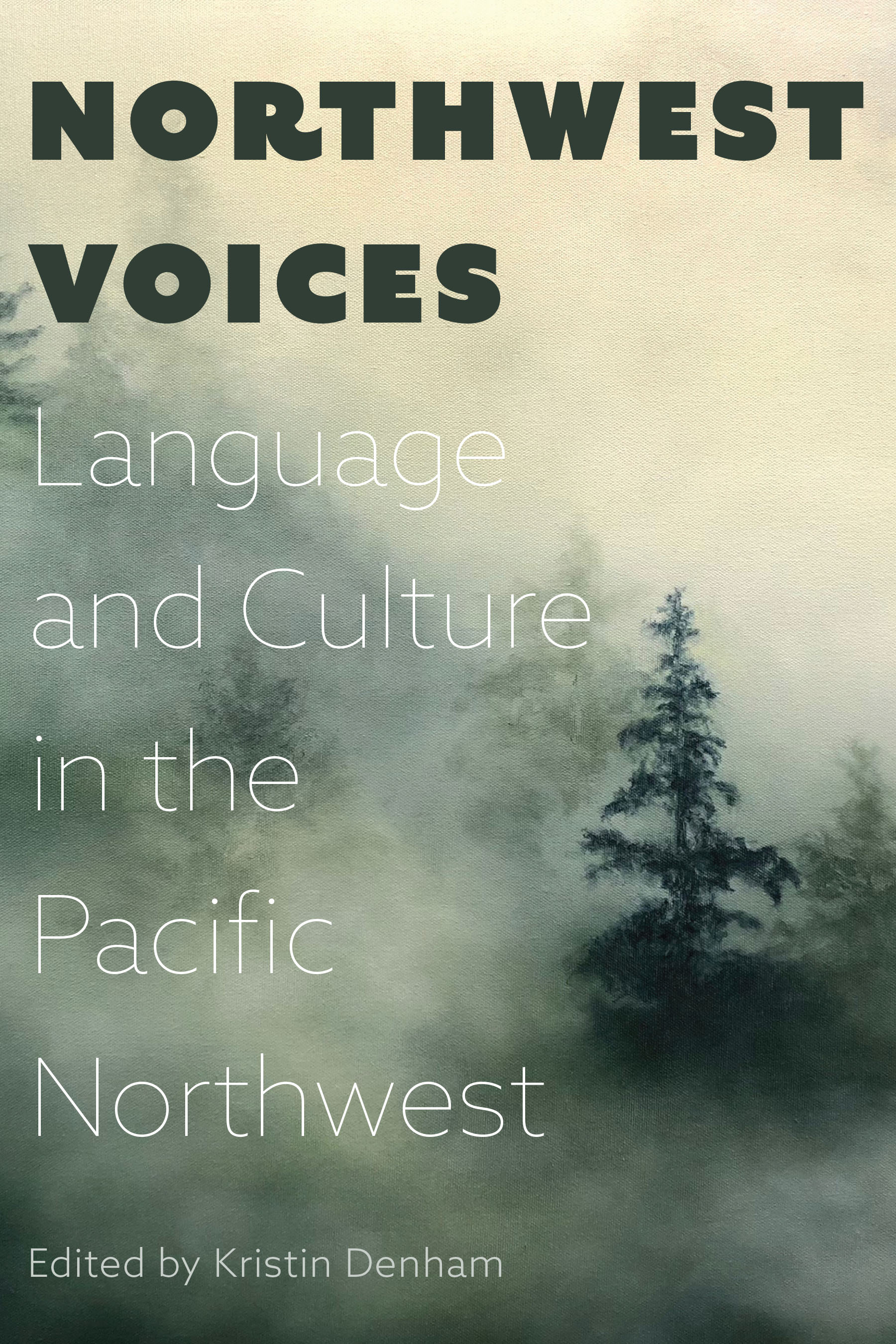Interested in the linguistic heritage of the Pacific Northwest? Northwest Voices is for regional residents, language lovers, and anyone interested in learning more about the fascinating ways that language, culture, and place intersect.
In Northwest Voices, editor Kristin Denham gathers perspectives from a variety of contributors, including a middle school teacher, a tribal linguist and language teacher, and the leader of the Lushootseed Language Institute, among others. These chapters cover everything from place names in the Pacific Northwest to Indigenous language revitalization to addressing the common belief that the region is “accent-less”.
Enjoy an exclusive preview to Northwest Voices in the following excerpt from Kristin Denham’s chapter “Language and Power, Language and Place”:
****
Before there was a Canadian and US border or provincial and state borders, there was still a region—a region with borders defined largely by the natural geographical boundaries of mountains, rivers, and coastline, and the trade routes that followed them. The use of Ichishkiin (also known as Sahaptin) spanned the Columbia River, and Athabaskan languages were spoken across what is now the coastal California and Oregon border, oblivious to these modern-day state boundaries.
Spread throughout this region are the speakers of many Indigenous languages. The contributions by Hugo, by Zenk and Cole, and by Miller (all this volume) acknowledge  many of these languages, and the place-names throughout the region (Richardson, this volume) are a daily reminder of the peoples who have long lived there. Parts of British Columbia, Washington, Oregon, Idaho, and Montana have been designated as “language hotspots” by National Geographic’s Enduring Voices Project and The Living Tongues Institute, an Oregon-based organization devoted to the documentation, maintenance, preservation, and revitalization of endangered languages around the world.
many of these languages, and the place-names throughout the region (Richardson, this volume) are a daily reminder of the peoples who have long lived there. Parts of British Columbia, Washington, Oregon, Idaho, and Montana have been designated as “language hotspots” by National Geographic’s Enduring Voices Project and The Living Tongues Institute, an Oregon-based organization devoted to the documentation, maintenance, preservation, and revitalization of endangered languages around the world.
The region is one of the five hotspots in the world because of its high number of diverse Native languages that are from different “genetically diverse” language groups (as different as English and Italian, in some cases; in others, as different as English and Chinese) that are highly endangered. When an entire group of languages is no longer spoken, we lose not only linguistic information that is of great importance to linguists, but also, as Crawford puts it, “The loss of linguistic diversity means a loss of intellectual diversity” (1995, 33).
Consider, as an example, ways in which a language can encapsulate certain kinds of knowledge: the Halkomel’em Musqueam people group certain kinds of fish under the “salmon” label: sce:ɬtən. This includes fish that are called steelhead trout and cutthroat trout in English, but which genetic analysis has shown are, in fact, of the salmon genus, and not trout at all. Such information about flora and fauna from peoples who have lived in the region for millennia can disappear right along with the language, as well as, of course, the loss of culture and of identity, which are so closely tied to language. Our languages are important; each one and its many forms should be carefully considered as an integral part of language and place.
***
Northwest Voices will be available June 2019. Preorder your copy here!
***
Kristin Denham is Professor of Linguistics at Western Washington University. She received her PhD in linguistics from the University of Washington. She is co-author of Why Study Linguistics, Navigating English Grammar, and Linguistics for Everyone, and co-editor of Linguistics at School: Language Awareness in Primary and Secondary Education and Language in the Schools: Integrating Linguistic Knowledge into K–12 Teaching. She teaches courses on syntax, Salishan languages, language and identity, endangered languages, English grammar, and linguistics in education.
